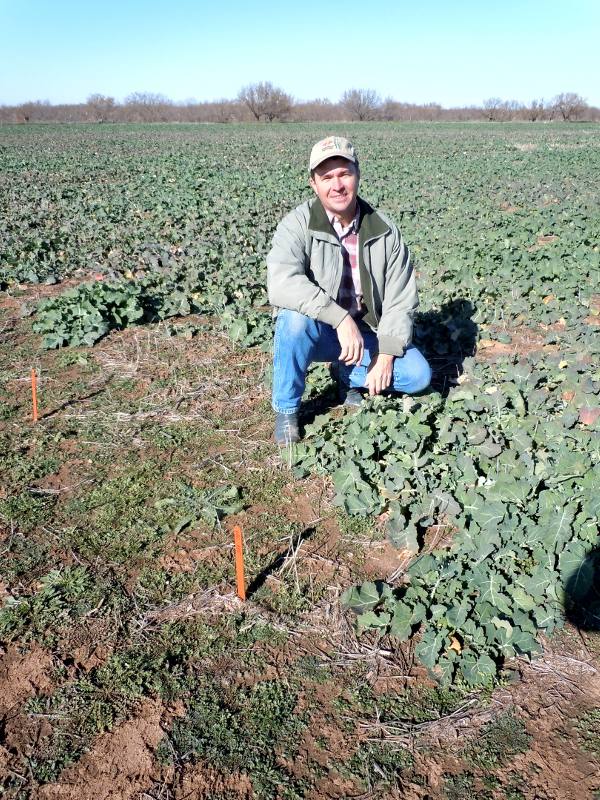January 3, 2012

More than 200,000 acres of winter canola are believed to have been planted in Oklahoma, South Kansas and North Texas for the 2011-12 crop year, says Gene Neuens, who works for the Producers Cooperative Oil Mill at Oklahoma City.
The oil mill and Oklahoma State University planted a winter canola test plot in cooperation with Cotton County farmer Jimmy Kinder last fall. The test plot is located on the north side of Highway 70 seven miles east of Grandfield. Winter canola varieties planted in the test plot are all Roundup Ready varieties.
Varieties planted in the test plot include: Cropland 110, 115, 125 and 154 as well as DeKalb 4615, 4110 and 4710. Sulfur and boron tests with winter canola are also included in the test, Neuens said.
The plots were planted between Sept. 10 and Oct. 10, 2011, the "planting window" for winter canola in the Southern Plains, he said. Kinder and his family planted 3,000 acres of winter canola.
"We dusted in our canola and our wheat," Kinder said. "It hadn't rained all year.
Last year was a record for drought and hot weather. But in the last 90 days we received more than 10 inches of rain. That has given us an entirely new outlook for our crops."
Severe drought conditions caused many farmers and ranchers to sell a lot of their cattle, Kinder said. There was no pasture grass available; what hay was available escalated in price and most of the pasture ponds dried up, he said.
"But recent rains have given us a chance to put calves on wheat pasture," Kinder said. "Most of the wheat in this area has cattle grazing on it. We have cattle grazing on all of our wheat."
Although NOAA and other meteorologists are predicting a continuation of drought conditions in varying stages of severity for 2012, Kinder is hopeful the rains will continue for the rest of the growing season so they can have a good harvest next spring.
Kinder finds winter canola has real benefits for wheat production when wheat is planted on fields where canola was planted the year before. "We obtained, under drought conditions, our best wheat yields where wheat followed winter canola," he said.
One of the reasons wheat does well following canola is the large taproot the canola plant puts down, Kinder said. The taproot, similar to cotton, breaks up subsoil pans, loosening the soil to make water and nutrients more available for crop uptake.
Winter canola is a relatively new crop in the Southern Great Plains, promoted by Dr. Tom Peeper, OSU Extension agronomist, in his search for ways to break up weed problems in continuously-grown winter wheat.
Dr. Peeper’s research showed that winter canola breaks up the cycle of such perennial weeds as winter grass and rye. Presence of these weed seeds in wheat taken to grain terminals at harvest reduces prices paid to farmers.
Winter canola seed has a large oil content, which makes it an important source of oil for biofuels and for cooking oil. Prices paid for winter canola seed historically have been higher than those prices paid for winter wheat.
Winter canola production gives farmers one more important money crop to add to wheat, cotton, corn, grain sorghum and soybeans grown in the Southern Great Plains.
You May Also Like




